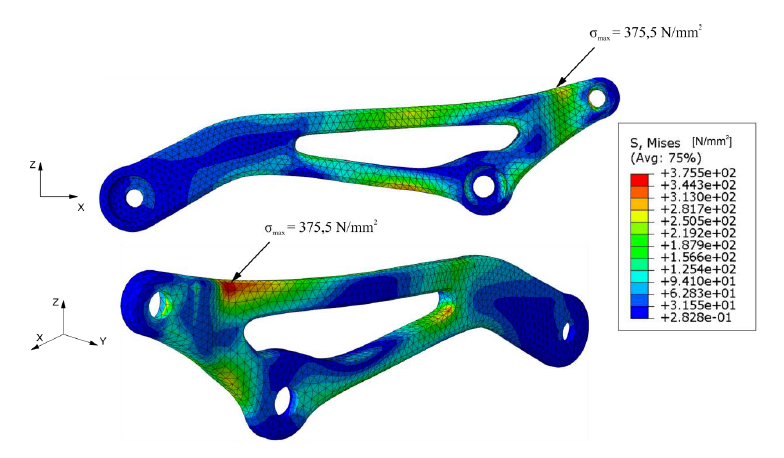This paper presents frame design for a full suspension mountain bike. The bicycle types are sorted according to their purpose and type of suspension. Structural optimization is described in general with a special emphasis on topology and shape optimization. Furthermore, this paper provides basic mathematical background for understanding the given optimization methods and most common optimization software’s are listed. Moreover, the safety aspects of the mountain bike frame according to EN 14766:2006-09 and the dynamic testing of the bicycle frame are shown. Hydroforming is explained, a very common technological process of bicycle making which goal is to reduce mass using the most suitable pipe profile shape for a particular type of stress. Also, this paper gives overview of the importance of defining the frame and rear suspension geometry, as well as the characteristic features of the bicycle handling that are achieved by the different geometry of the bike frame and rear suspension. In order to construct the frame of the mountain bicycle, the paper analyzes the assumed loads affecting the frame of the bicycle during driving. Heavy loading during cycling in flatlands, bicycle riding and simultaneous braking, free fall from 0,5 meters in height and fatigue are studied. Strength of the rear suspension lever (rocker) is calculated using classical approach and finite element method. The results of strength calculation are compared. By using topology optimization and shape optimization to maintain the stiffness of the lever and limiting the volume reduction by up to 20%, the structure of the optimized lever is obtained and compared to the non-optimized lever.

Nikola Kuzmić
2017
Master thesis